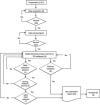AAPM Medical Physics Practice Guideline 5.a.: Commissioning and QA of Treatment Planning Dose Calculations - Megavoltage Photon and Electron Beams
- PMID: 26699330
- PMCID: PMC5690154
- DOI: 10.1120/jacmp.v16i5.5768
AAPM Medical Physics Practice Guideline 5.a.: Commissioning and QA of Treatment Planning Dose Calculations - Megavoltage Photon and Electron Beams
Abstract
The American Association of Physicists in Medicine (AAPM) is a nonprofit professional society whose primary purposes are to advance the science, education and professional practice of medical physics. The AAPM has more than 8,000 members and is the principal organization of medical physicists in the United States. The AAPM will periodically define new practice guidelines for medical physics practice to help advance the science of medical physics and to improve the quality of service to patients throughout the United States. Existing medical physics practice guidelines will be reviewed for the purpose of revision or renewal, as appropriate, on their fifth anniversary or sooner. Each medical physics practice guideline represents a policy statement by the AAPM, has undergone a thorough consensus process in which it has been subjected to extensive review, and requires the approval of the Professional Council. The medical physics practice guidelines recognize that the safe and effective use of diagnostic and therapeutic radiology requires specific training, skills, and techniques, as described in each document. Reproduction or modification of the published practice guidelines and technical standards by those entities not providing these services is not authorized. The following terms are used in the AAPM practice guidelines:• Must and Must Not: Used to indicate that adherence to the recommendation is considered necessary to conform to this practice guideline.• Should and Should Not: Used to indicate a prudent practice to which exceptions may occasionally be made in appropriate circumstances.
Figures
References
-
- Mackie RT, Liu HH, McCullough EC. Treatment planning algorithms: model‐based photon dose calculations. In: Khan FM. and Gerbi BJ, eds. Treatment planning in radiation oncology. Philadelphia, PA: Lippincott Williams & Wilkins; 2012. p.93–109.
-
- Khan FM. Treatment planning algorithms: electron beams. In: Khan FM. and Gerbi BJ, eds. Treatment planning in radiation oncology. Philadelphia, PA: Lippincott Williams & Wilkins; 2012. p.126–132.
-
- Hoffmann L, Jorgensen MB, Muren LP, Petersen JB, et al. Clinical validation of the Acuros XB photon dose calculation algorithm, a grid‐based Boltzmann equation solver. Acta Oncol. 2012;51(3):376–85. - PubMed
-
- Glide‐Hurst C, Bellon M, Foster R, et al. Commissioning of the Varian TrueBeam linear accelerator: a multi‐institutional study. Med Phys. 2013;40(3):031719. - PubMed
-
- Das IJ, Cheng CW, Watts RJ, et al. Accelerator beam data commissioning equipment and procedures: Report of the TG‐106 of the Therapy Physics Committee of the AAPM. Med Phys. 2008;35(9):4186–215. - PubMed
MeSH terms
Grants and funding
LinkOut - more resources
Full Text Sources
Other Literature Sources
Medical


